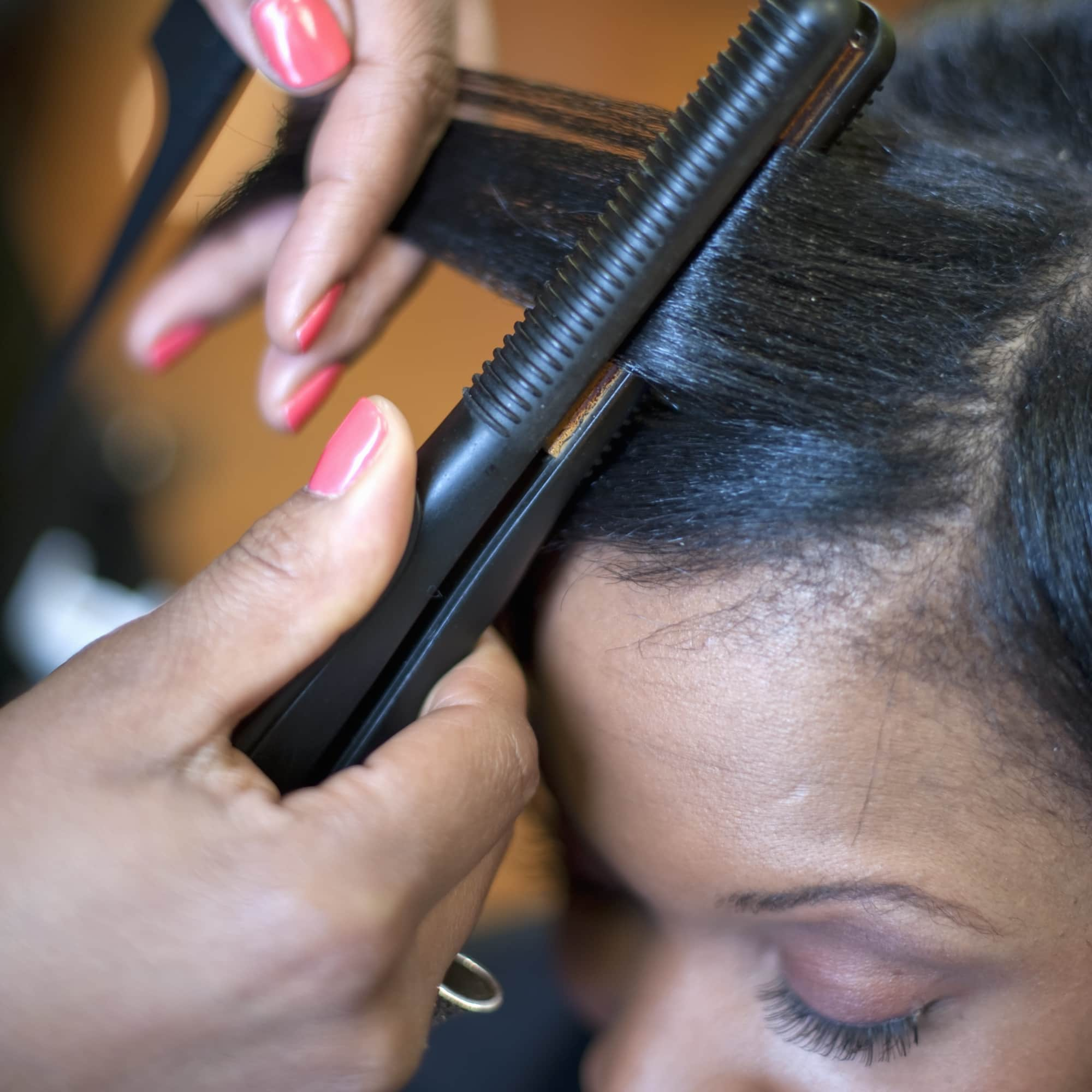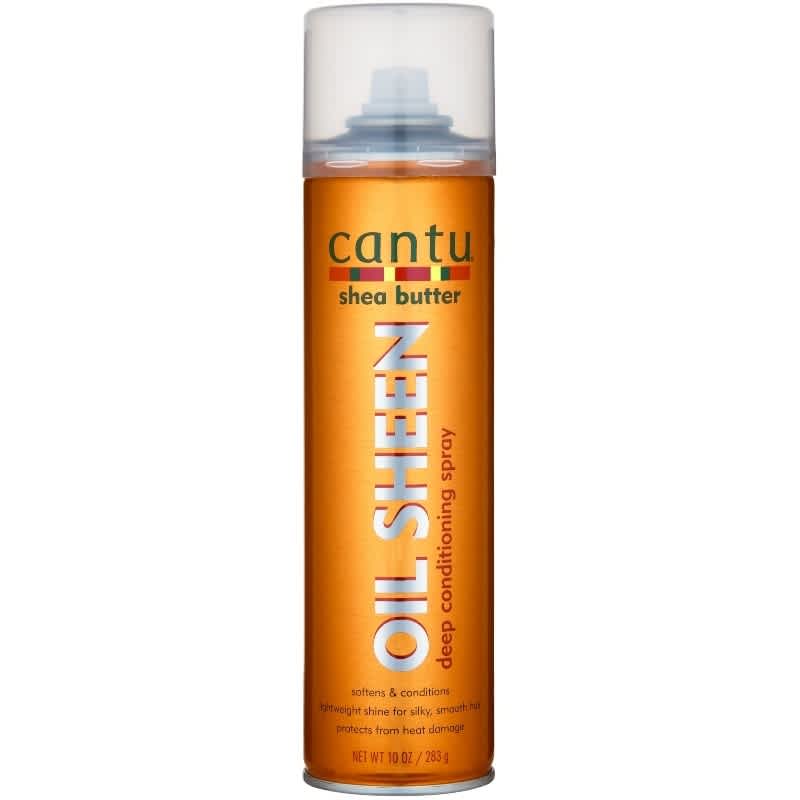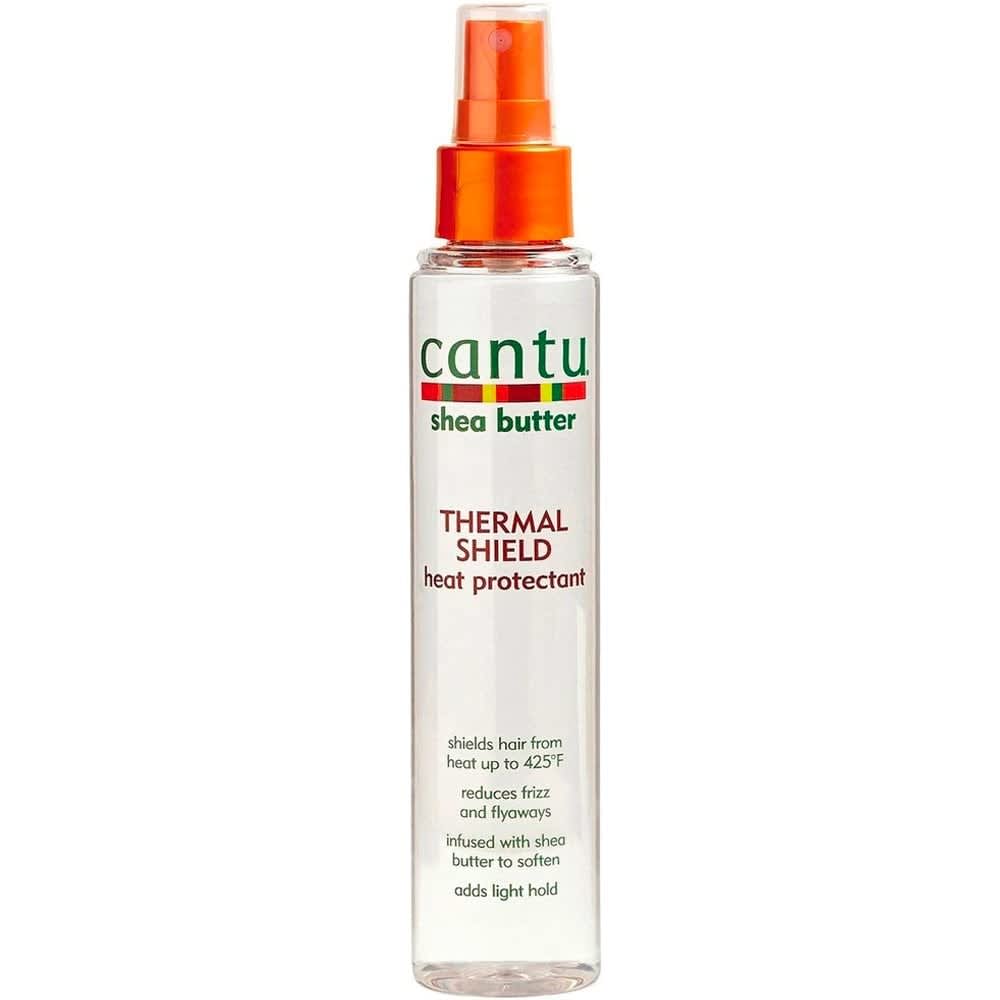
- POPSUGAR Australia
- Beauty
- Straightening Type 3-4C Natural Hair? Here's How to Do It Without Damaging Your Strands
Straightening Type 3-4C Natural Hair? Here's How to Do It Without Damaging Your Strands

For hair types 3 and 4, straight hair has been a style that has circulated amongst the Black community as early as the 1800s. But for many reasons, over the past decade, straightened strands amongst the natural hair community have fallen by the wayside. The reason being is their divisive and turbulent history, including the natural hair movement’s goal of negating western beauty standards (the notion that only straight, silky, and long hair is beautiful) and the fact it used to be damaging, dangerous, and even toxic to achieve a straight style on Afro hair due to chemical relaxers and scalding-hot tools.
Thanks to social media, however, we’re experiencing a surprising straight-hair revival in the Black hair industry. It’s especially prevalent on TikTok, with #silkpress at 400 million views and #relaxedhair at 47.3 million.
Even though we are seeing a return of the straight-hair trend, what we’re not seeing is a return of the same techniques to do it. Thankfully, the methods in which the style is achieved have had a refreshing advancement. With better tools, greater product innovation, and more style options and expert professionals at our fingertips, straightening Afro hair needn’t be as damaging as it once was. Finding new ground to shine, straightening Afro-textured hair should no longer be seen as individuals detaching from their coiled roots but, like any other hairstyle – wigs, braids, weaves – just another styling option for our natural texture.
With that advancement in mind, Afro-hair experts share their tips and product recommendations for safely straightening types 3-4 hair.
First, Understand Your Roots
Kinky and coily hair types are more fragile due to the elliptical structure of the follicle (as opposed to the round- or oval-shaped follicles of straighter hair types). The flatter hair follicle of type 3-4 hair can have more bends and curls along the strand, which makes it less resilient against external stressors like heat, humidity, bleach, and tension.
All of this means that when using electrical styling tools on type 3-4 hair, there’s a potential for more breakage and heat damage if the hair isn’t prepped sufficiently or tools aren’t used properly. “The potential to cause damage is also due to the fact that when heat is applied, it raises the hair cuticle, which can contribute to dryness,” London-based hairstylist Dionne Smith told POPSUGAR. “This is one of the main reasons why it’s super important to apply a heat-protectant product prior to heat styling the hair.”
It’s also why you should space out your straightening sessions, according to hairstylist Nai’vasha, who works with celebrities like Alicia Keys, Tracee Ellis Ross, and Yara Shahidi, to name a few. “Avoid straightening the hair more than one to two times a week, as too much heat exposure trains the hair to stay straight, which ultimately ruins the natural curl pattern [over time] and causes heat damage,” she told POPSUGAR.
Because the health of your hair is paramount, it’s also important to know when not to straighten your hair by paying attention to how it looks and feels. “Avoid straightening the hair if it’s suffering from damage or dryness – instead, spend time rebuilding its strength first,” Smith said. You can always look into straightening styles down the line, but focusing on conditioning and seeing your hairstylist should be first on the agenda.
Look For Tools That Give You Control
Hot tools for Black hair have come a long way since the days when our mothers or aunties would heat up a comb on the cooker or turn on our plug-in-the-wall hot comb. Or in the same breath, apply chemical relaxer to our hair and have to wash it out before it burned our scalp. But with more options comes more confusion, and with such a vast range of hair tools on the market, it can be difficult to know what hair tools cater to Black hair and how to use them without causing damage. As Nai’vasha explained, “The key to straightening natural hair without the risk of heat damage is heat control. Understanding correct heat settings for your hair type is paramount.”
So, what do we look out for? “When heat styling, I’d recommend investing in a quality pair of straighteners to minimise the chance of damage,” said Smith, who recommends her Signature by Dionne Smith Straighteners. “Straighteners should come with a heat-adjustable function so you can apply the right amount of heat for your hair type and texture. It also helps if your straighteners have a ceramic coating to lessen the chance of damage and protect your delicate strands.”
Nai’vasha loves using the T3 Heat ID tools for safer heat styling. “The heat level is personalised to your specific hair type, helping to minimise heat damage,” she said.
Prepping Your Hair Is the Most Important Part
Whilst every hair type, curl pattern, and hair journey is different, you will find that to keep textured hair free from damage, your technique has to be golden. “You can absolutely straighten Afro hair without causing damage, but the key is making sure to use heat protectant beforehand,” hairstylist and cofounder of Flawless by Gabrielle Union Larry Sims told POPSUGAR. “Apply a leave-in conditioner and heat protectant before applying direct heat to the hair, that way the hair is as protected and conditioned as possible,” Sims explained of his go-to technique.
“I’ve learnt that prep is the most important part,” echoed Akesha Reid, a London-based beauty journalist and hair expert. “Do use heat protectors with silicones such as Olaplex No.6 Bond Smoother ($50) and L’Oréal Professionnel Serie Expert Absolut Repair-10-in-1 Leave-In-Oil (#31.95), as they lock out humidity. If you don’t use silicones, you will find that your hair will revert back quickly,” she shared.
Whatever You Do, Blow-Dry Your Hair First
Before you even think of picking up that straightener, it’s integral to blow-dry your hair first. “Blow-drying the hair prior takes out the drying time and intense exposure of heat to hair,” Sims said.
“When you dry your hair, you need to dry it and then refine it before going in with the straighteners, so I section and detangle with heat protection before using the pik attachment on my hairdryer (either the Dyson Supersonic or the GHD Helios),” Reid explained. “Then, when your hair is dry, you can blow-dry it straight. This gives you that smooth, fluffy, and completely dry foundation that will lead to a perfectly straight finish,” she explained.
Keeping the Heat to a Minimum (as Best You Can)
Every expert we spoke to also emphasised the importance of not applying extreme heat to the hair. “Use a temperature-controlled heat styler, and never go above 160ºC,” Sims said. “Too much heat passing through the hair will lead to heat damage and breakage if not careful.”
In addition to protecting your hair from excess damage, keeping the heat to a minimum will also help your strands stay straighter for longer. “When you’re flat-ironing/straightening your hair with a medium heat, the hair holds the style longer when excess heat is not used,” Nai’vasha explained.
Work in Sections For the Best Results
There is nothing worse than when you’ve finished straightening your hair and you find that it still looks puffy at the roots and straight at the edges. “For the smoothest and straightest finish, use sectioning clips on the hair to make styling and straightening easier,” Smith said.
Initially, it’s recommended to section your hair into four parts and then divide your hair into one- to two-centimetre rows before applying your heat protectant. Once you’ve completed that, pass the straightener through each section to ensure the hot tool reaches each strand from root to tip. Finish by running an oil over top to lock in the style.
Ensure a Shiny, Long-Lasting Finish
After applying heat protectant and carefully blow-drying the hair, Sims then finishes with adding an oil “to give a nice gloss to the strands whilst locking in additional moisture”. “Don’t forget about humidity in the air around you,” Reid said. “Make sure to cover your hair with a headscarf, or you will find whether showering, working out, or cooking over the oven that the moisture will get to the strands and revert it.”
Keep reading to shop these experts’ products and kit essentials for straightening Afro hair.







